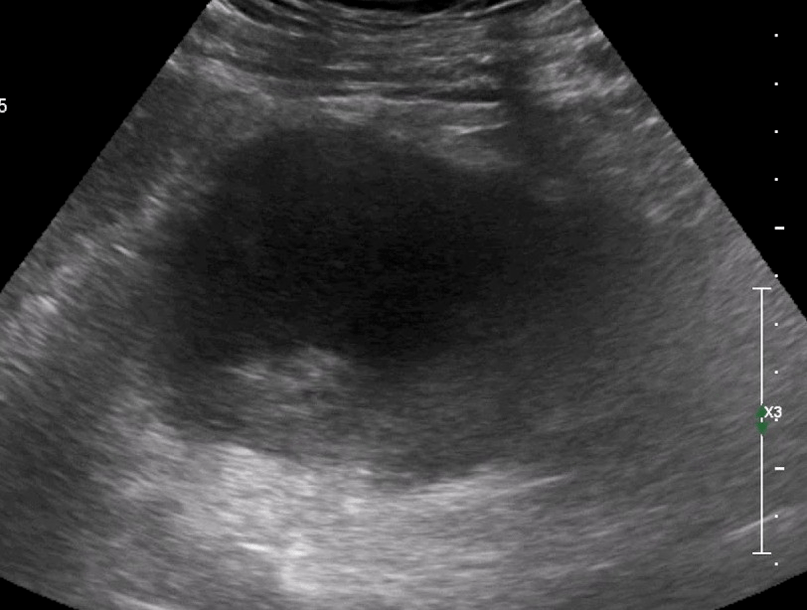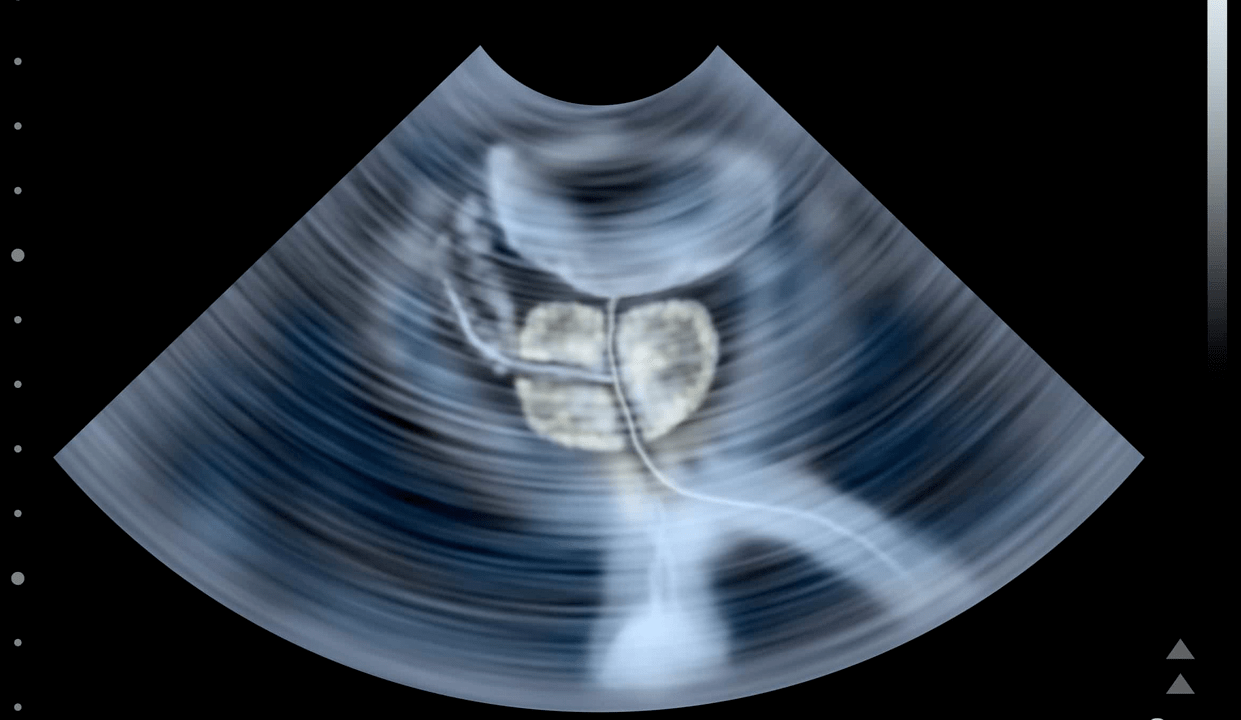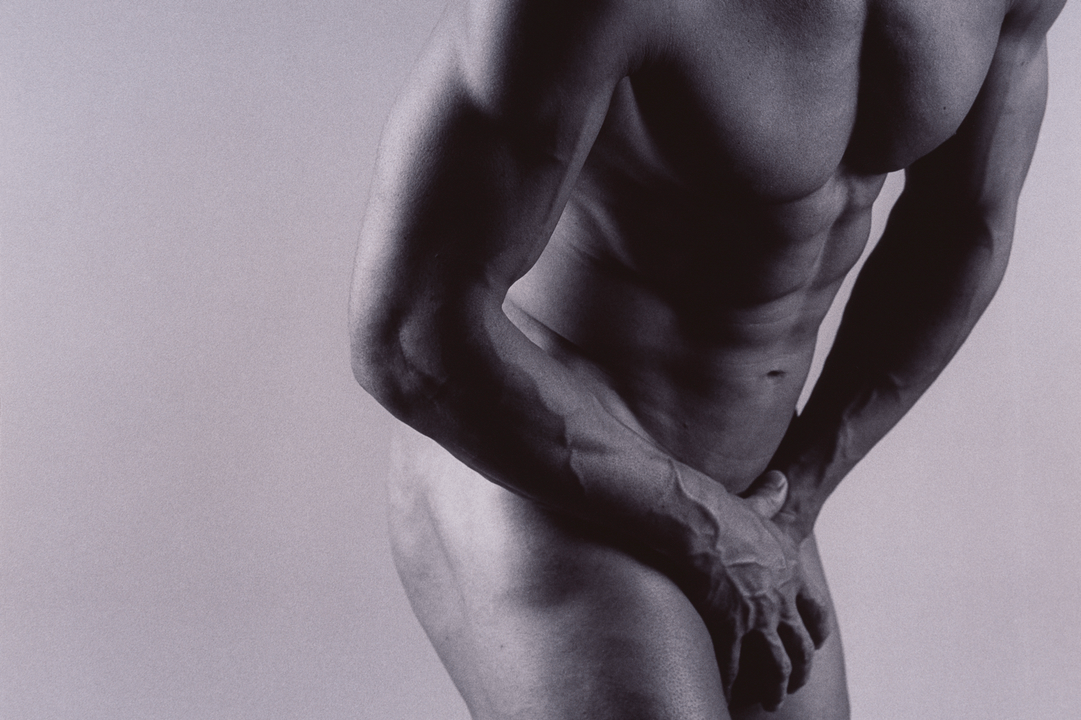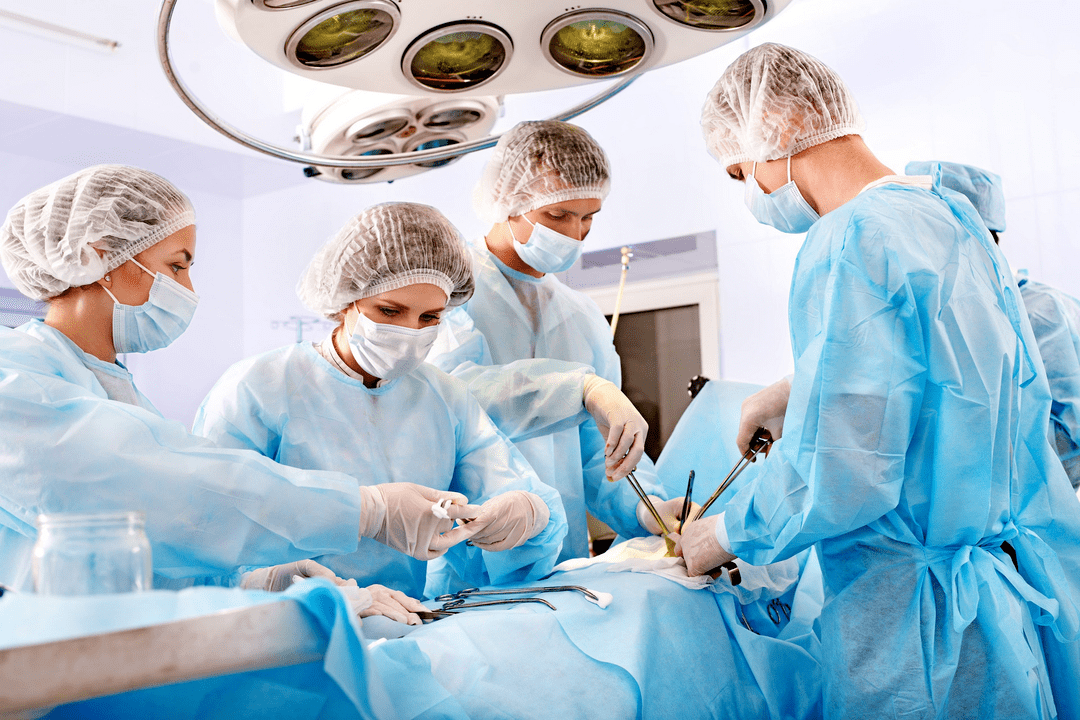Stone prostatitis is accompanied by frequent urination, dull pain in the lower abdomen and perineum, erectile dysfunction, blood in semen and prostatic secretions. Actuarial prostatitis can be diagnosed by digital prostate examination, prostate ultrasound, survey X-rays, and laboratory testing. Conservative treatment of calculous prostatitis is carried out with the help of medications, herbal remedies and physiotherapy; If these measures are ineffective, stone destruction with a low-intensity laser or surgical removal will be indicated.

General information
Stone prostatitis is a form of chronic prostatitis, accompanied by the formation of stones (prostate stones). Actuarial prostatitis is the most common complication of long-term inflammation in the prostate, which specialists in the field of urology and andrology are faced with. During preventive ultrasound, prostate stones are detected in 8. 4% of men of different ages. The incidence of calculous prostatitis is highest in the 30-39 age group and is due to an increase in cases of chronic prostatitis due to sexually transmitted diseases (chlamydia, trichomonas, gonorrhea, ureaplasmosis, mycoplasmosis, etc. ). In men aged 40-59 years, stone prostatitis often develops against the background of prostate adenoma, and in patients over 60 years old, this disease is associated with a decline in sexual function.

The cause of prostatitis is due to stones
Depending on the cause of formation, prostate stones can be real (primary) or false (secondary). Primary stones initially form directly in the cysts and ducts of the gland, secondary stones move into the prostate from the upper urinary tract (kidney, bladder or urethra) if the patient has urinary stones.
The development of stone prostatitis is due to congestive and inflammatory changes in the prostate. Impaired prostate emptying is caused by BPH, abnormal or lack of sexual activity, and a sedentary lifestyle. In this context, the addition of a slow infection in the genital tract leads to obstruction of the prostatic duct and changes in the nature of prostatic secretions. On the contrary, prostate stones also support chronic inflammation and stagnation of secretions in the prostate.
In addition to stasis and inflammation, urethral-prostatic reflux plays an important role in the development of stone-induced prostatitis - the pathological reflux of small amounts of urine from the urethraprostatic duct during urination. At the same time, the salt in urine crystallizes, thickens and over time turns into stones. Causes of urethral-prostatic reflux can be urethral stricture, urethral trauma, loss of tone of the prostate and seminal tubers, previous transurethral resection of the prostate, etc. v.
The morphological core of prostate stones is amyloid bodies and sloughed epithelium, which gradually "overgrows" with phosphate and calcium salts. Prostate stones are located in distended cysts (lobules) or in excretory ducts. Prostate stones are yellowish in color, spherical in shape, and vary in size (on average from 2. 5 to 4 mm); can be single or multiple. In terms of chemical composition, prostate stones are identical to bladder stones. With stone-induced prostatitis, oxalate, phosphate and urate stones are most often formed.
Symptoms of prostatitis caused by stones
The clinical manifestations of stone prostatitis often resemble chronic inflammation of the prostate. The leading symptom when examined for stone-induced prostatitis is pain. The pain is dull and aching; localized in the perineum, scrotum, above the pubic bone, sacrum or coccyx. Aggravated pain may be associated with defecation, sex, physical activity, prolonged sitting on hard surfaces, prolonged walking, or bumpy driving. Stone prostatitis is accompanied by frequent urination, sometimes causing complete urinary retention; hematuria, prostatic hypertrophy (leakage of prostatic secretions), hemorrhage. Characterized by decreased sexual desire, weak erection, poor ejaculation and painful ejaculation.
Endogenous prostate stones can exist in the prostate for a long time without symptoms. However, prolonged chronic inflammation and associated prostatitis can lead to prostatic abscess formation, development of vesicular inflammation, and atrophy and sclerosis of the glandular tissue.
Diagnosis of prostatitis caused by stones
To establish the diagnosis of acalculous prostatitis, a consultation with a urologist (internist), assessment of existing complaints and physical and instrumental examination of the patient is required. When performing digital rectal examination of the prostate, a rough surface of the stone and a kind of crunch are determined by palpation. Using transrectal prostate ultrasound, stones were detected in sonographic formations with clear acoustic pathways; Their location, number, scale and structure are clarified. Sometimes urinary tract X-rays, CT and MRI of the prostate are used to detect prostate stones. Exogenous stones are diagnosed by pyelography, cystography and urethrography.
Instrumental examination of patients with stone prostatitis is supplemented by laboratory diagnostics: examination of prostatic secretions, bacterial culture of urethral secretions and urine, PCR examinationscratches to detect sexually transmitted diseases, biochemical analysis of blood and urine, determination of the level of prostate-specific antigens, sperm biochemistry, sperm culture, etc. v.
When conducting an examination, stone prostatitis is distinguished from prostatic adenoma, tuberculosis and prostate cancer, bacterial and chronic bacterial prostatitis. In acalculous prostatitis unrelated to prostatic adenoma, prostate volume and PSA levels remain normal.
Treatment of prostatitis caused by stones

Uncomplicated stones associated with chronic prostatitis require cautious anti-inflammatory treatment. Treatment of stone prostatitis includes treatment with antibiotics, nonsteroidal anti-inflammatory drugs, herbal medicines, physiotherapeutic procedures (magnetic therapy, ultrasound, electrophoresis). In recent years, low-intensity lasers have been used successfully to noninvasively destroy prostate stones. Prostate massage is strictly contraindicated in patients with stone-associated prostatitis.
Surgical treatment of stone-induced prostatitis is often required in cases where the disease is complicated, combined with prostate tumors. When a prostatic abscess forms, the abscess opens and along with the drainage of pus, movement of the stone is also noted. Sometimes mobile exogenous stones can be pushed into the bladder with an instrument and lithotripsy. Removal of large fixed stones is performed during episiotomy or suprapubic surgery. When stone-induced prostatitis is combined with benign prostatic hypertrophy, the optimal surgical treatment is adenoma removal, prostate TUR, prostatectomy.
Treatment of prostatitis caused by stones
Actuarial prostatitis is inflammation of the prostate gland, complicated by stone formation. This type of prostatitis is the result of long-term chronic prostatitis. The disease is accompanied by frequent urination, persistent pain in the lower abdomen and perineum, erectile dysfunction and the appearance of blood residue in semen.
Cause of this disease
Calculus is a form of chronic prostatitis characterized by stone formation. The disease is often a complication of a long-term inflammatory process in the prostate. Against the background of chronic inflammation under the influence of negative internal and external factors, the excretion process stagnates, over time crystallizes and turns into stones.
In addition to obstruction and inflammation, urethral-prostatic reflux, characterized by the pathological reflux of small amounts of urine from the urethra into the prostatic duct during urination, plays a major role indevelopment of stone-induced prostatitis. Salts contained in urine gradually crystallize and over time turn into dense stones. Common causes of prostatic ureteral reflux:
- urethral injury;
- loss of tone of the prostate and seminal tubers;
- Previous surgical interventions and invasive procedures.
Other diseases increase the risk of forming stones in the prostate:
- small pelvic varicose veins;
- Metabolic disorders due to systemic diseases;
Factors that contribute to the development of stone-induced prostatitis:
- An inactive lifestyle contributes to the development of stagnant processes in the pelvic organs;
- Irregular sex life;
- alcohol abuse, smoking;
- uncontrolled use of certain groups of drugs;
- Prostate damage during surgery, long-term catheterization.
Types of stones in stone-induced prostatitis
According to the number of stones, there are single and many. Depending on the underlying cause, prostate stones are:
- THAT'S RIGHT. They are formed directly in the cysts and ducts of the gland.
- WRONG. They move to the prostate from the upper urinary tract: kidneys, bladder, urethra.
Prostate stone formation is identical in composition to bladder stones. With stone-induced prostatitis, the following types of stones most often form:
Symptoms of the disease
Symptoms of prostatitis with stones are similar to the progression of chronic inflammation. The leading symptom in the clinical picture of the disease is pain, the nature of which can be aching and dull. Pain location: sacrum or coccyx.
The pain is aggravated by defecation, sex, physical activity, prolonged sitting on hard surfaces, and prolonged walking.
Other symptoms of the disease:
- frequent urination or complete urinary retention;
- hematuria and the presence of blood impurities in ejaculation;
- prostate – leakage of prostatic secretions;
- decreased sexual desire, erectile dysfunction, painful ejaculation;
- Neurological disorders: irritability, increased fatigue, insomnia.
If you have any of the above symptoms, you should make an appointment with a urologist as soon as possible. Failure to adequately treat and prolong chronic prostatitis caused by stones will cause serious, sometimes life-threatening consequences:
- atrophy and sclerosis of glandular tissues;
- Prostate abscess.
Diagnose
To establish an accurate diagnosis, consultation with a urologist-endocrinologist is required. During the first examination, the specialist will carefully listen to the patient's complaints, collect a history and ask additional questions that help determine the cause of prostatitis and risk factors.
Next, the doctor performs a rectal examination of the prostate, which involves palpating the gland through the rectum. This technique allows you to evaluate the size, shape, structure of the gland, detect stones, determine the inflammatory process by increasing its size and feeling pain when applied to pressure. To confirm the diagnosis, additional laboratory methods and instruments are prescribed.
Laboratory diagnosis
Some additional laboratory tests are used to diagnose stone-associated prostatitis:
- Culture of prostatic secretions. An important informative method for identifying pathogenic microorganisms and diagnosing the inflammatory process in the prostate.
- Urine culture. Allows you to detect pathogenic infections in urine, as well as determine its type and concentration. Cultures are performed to clarify the diagnosis if prostatitis is suspected.
- PCR study of debris. Allows you to detect sexually transmitted diseases and identify pathogens.
- PSA analysis. Allows you to rule out prostate cancer, which often occurs against the background of prostatitis.
- General clinical analysis of blood and urine. It is prescribed to identify hidden inflammatory processes in the urinary tract and disorders of the kidneys.
- Sperm map. Ejaculate analysis to rule out or confirm infertility.
Diagnostic tools
Instrumental methods used to diagnose pathology:
Prostate ultrasound. Allows you to detect stones, clarify their location, quantity, size, structure. Ultrasound will also help distinguish prostatitis from other diseases with similar symptoms.
Urinary examination. X-rays enhance contrast, helping to detect prostate stones, their size and location.
CT or MRI of the prostate. Allows layer-by-layer scanning of the prostate and surrounding tissues. Using CT or MRI images, the doctor can study in detail the structure of the prostate, detect pathological foci, evaluate their location, size and relationship with surrounding tissues.
Treatment of prostatitis caused by stones
If the disease is uncomplicated and the patient's general condition is satisfactory, treatment of stone-induced prostatitis is performed on an outpatient basis. If the disease is accompanied by complications, combined with prostate tumor, the patient must be hospitalized.
Conservative treatment
The main goal of conservative therapy is to eliminate pathological symptoms. To do this, the patient is prescribed a course of drug treatment, which includes the use of the following groups of drugs:
- Antibiotics. Destroys infection, stops inflammation. The type of drug, dosage and duration of treatment for each patient are determined individually.
- Nonsteroidal anti-inflammatory drugs. They stop the inflammatory process and help eliminate pathological symptoms: pain, swelling.
- Antispasmodic drugs. Reduces muscle spasms and pain.
- Alpha adrenergic blockers. Create favorable conditions for the urination process.
- Vitamin-mineral complex, immunomodulator. Strengthens the immune system and promotes quick recovery.
To complement complex drug therapy, doctors often prescribe physiotherapeutic procedures that allow:
- eliminate stagnant processes;
- Activate tissue regeneration.
- The most effective physical therapy methods for treating prostatitis caused by stones:
- Ultrasound therapy, shock wave therapy.
Effective treatment of stone-induced prostatitis is ensured by lifestyle changes. To prevent recurrence, you should increase your physical activity, especially if your job forces you to lead a sedentary lifestyle. Moderate physical activity improves blood circulation in the pelvic organs, eliminates congestion and strengthens local immunity.
Surgery
Surgical treatment is performed in cases where the disease is complicated and combined with prostate hyperplasia. When an abscess forms, the surgeon will open the abscess. Along with the discharge of pus, movement of stones is often observed. Large fixation stones will be removed during an episiotomy or suprapubic procedure. When stone prostatitis is associated with benign prostatic hypertrophy, the optimal surgical treatment is transurethral prostatectomy.
Chronic prostatitis due to stones

The term stone prostatitis defines the pathology of the prostate gland, in which stones form in its ducts. This disease is characterized by poor erection of the penis and pain in the groin area.
Causes and development mechanism of stone-induced prostatitis
Prolonged inflammatory process or blockage in the prostatic duct leads to the accumulation of secretions and mucus in it. Bacteria settle on these deposits and precipitate calcium salts. The mucus becomes thicker over time and turns into small, sand-like stones. They stick together and form stones.

There are several factors that influence the development of stone-induced prostatitis:
- Chronic sexually transmitted infections (STDs)
- Prolonged infectious process with inflammation of the ducts and tissues of the prostate;
- blockage in the prostate, mainly associated with men's irregular sex life;
- urethral-prostatic reflux - pathological backflow of small amounts of urine into the prostate;
- Genetic predisposition – presence of relatives with stone prostatitis.

Knowledge of the causes of prostate stone development is necessary for effective and adequate therapy to treat the cause, helping to prevent the recurrence of stone-induced prostatitis.
Symptoms of prostatitis caused by stones
Symptoms of stone prostatitis develop over a long period of time and men may not notice them. The clinical picture of the disease may include symptoms such as dull pain in the lower abdomen and lower back, sacrum, perineum and pubic bone.
The pain may begin or increase after defecation, sex, intense physical activity, and other irritants. Dysuria is noted - frequent desire to go to the toilet, painful or difficult urination, burning in the urethra and lower abdomen, and sometimes urinary retention occurs due to obstruction in the form of stones.
The patient has prostatic hypertrophy - involuntary secretion of the prostate gland at rest or during exertion, straining during bowel movements or urination. There may be blood in urine and semen.
Almost always, against the background of persistent inflammation with stone formation, sexual dysfunctions develop - weak erection, premature ejaculation, decreased sexual desire.
The main signs of stone-induced prostatitis include:
- erectile dysfunction;
- pain in the groin area, which can be spasmodic and paroxysmal;
- during ejaculation – shows damage to the vessels of the prostatic duct due to sharp edges of stones;
- Premature and painful ejaculation.

Such symptoms lead to decreased sexual desire.
Often, men attribute this to the age factor, mistakenly believing that such sexual dysfunctions will not go away. Sometimes they start self-medicating with various erection-stimulating drugs (PDE-5 inhibitors).

This approach is dangerous because it can aggravate the pathological process and lead to the development of complications.
Prostatitis is an inflammatory pathological process in the male prostate. In most cases, the cause is infection, which gradually leads to chronic, long-term illness and the development of complications.
Treatment of stone-induced prostatitis is very complex
- antibiotic,
- anti-inflammatory drugs,
- enzymes
- immune medicine
- plant therapy,
- physical therapy procedures.

Antibacterial agentprescribed as part of etiotropic treatment. Their consumption is necessary to suppress the activity of the agent that causes the inflammatory process. This can be both non-specific bacterial flora (streptococci, staphylococci, enterococci, Escherichia coli, Proteus) and specific pathogens of urogenital infections - gonococci, chlamydia, ureaplasma, trichomonas, etc. v.
The choice of antibiotic can be based on the results of culture studies of prostate secretions and determination of the sensitivity of pathogenic bacteria to the drug. Sometimes antibiotics are prescribed empirically based on scientifically proven antibacterial effectiveness. The choice of antibiotic, determination of dosage and duration of use can be carried out exclusively by the attending physician, since uncontrolled use can lead to serious complications and aggravationprogression of the underlying disease.
If the tissues of the prostate gland are parasitized by polyflora (bacteria, viral microorganisms, protozoa), then the etiotropic treatment regimen will include a complex of different drugs that actactive within a certain antibacterial spectrum.
To stimulate the body's immune defensesand its ability to fight infections, immunomodulatory drugs are prescribed - Immunomax, Panavir, Interferon and its derivatives. To improve the antibacterial effect of etiotropic drugs, enzymatic substances - longidase, chemotrypsin are prescribed with them. They facilitate the transport of active antibiotic substances to the affected tissues, have an indirect analgesic effect, have anti-inflammatory and regenerative effects.
Pain syndrome is alleviated byUse non-steroidal anti-inflammatory drugs. Along with antibiotic therapy, probiotics are prescribed to prevent the development of intestinal dysbiosis. To protect the liver parenchyma from the toxic effects of antibacterial drugs and improve its functional state, hepatoprotective drugs are prescribed. After the phenomenon of acute inflammation subsides, physiotherapeutic procedures are prescribed - laser treatment, magnetotherapy, mud therapy, electroplating, electrophoresis of drugs, reflexotherapy, hardware, etc. v.
This improves metabolism, microcirculation, lymphatic drainage and nutrition of prostate tissue, stimulates restoration of its functional state and helps resolve inflammatory processes. To destroy stones, low-frequency lasers are used. It crushes the stones and allows the small stones to pass out of the kidney tubules. In case of complications in the form of adenoma or prostatic abscess (a limited cavity filled with pus), surgical intervention will be performed.

It involves removing part of the prostate (resection). To avoid this, at the first signs of pathology, manifested in erectile dysfunction, you need to consult a doctor. Self-medication or ignoring the problem always leads to the further development of complications.



























